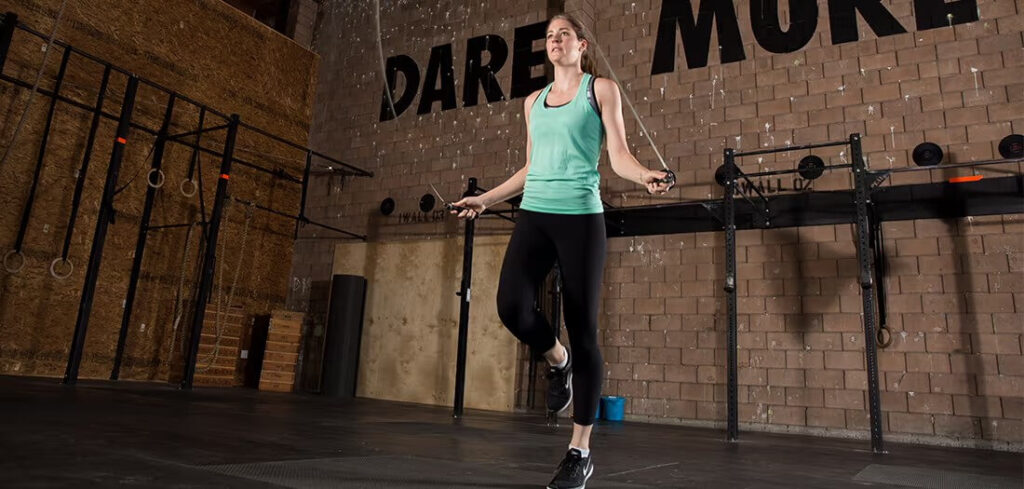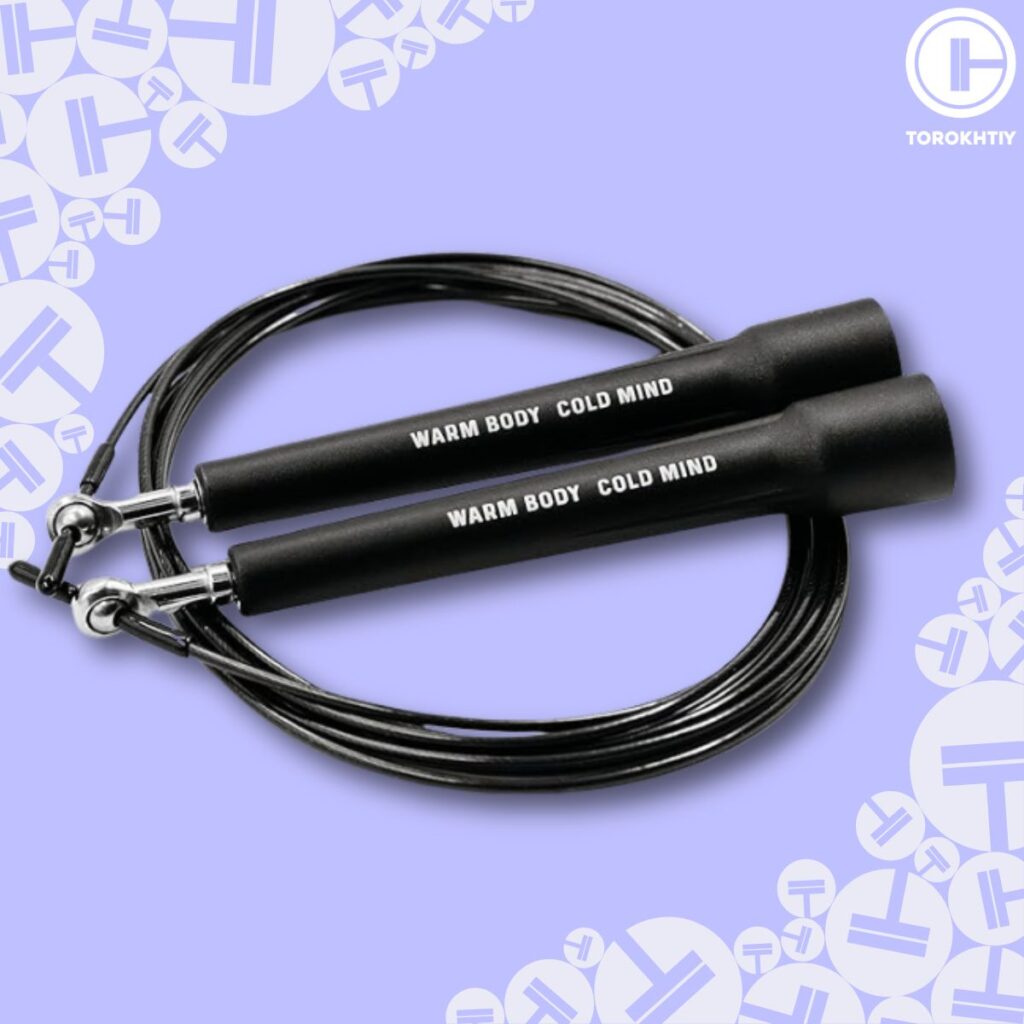How Many Minutes of Jump Rope Equals a Mile of Running
Author:
Unlock your full potential by engaging with our experts and community! Have questions about your fitness journey or looking for expert advice on weightlifting techniques? Don’t hesitate — leave a comment below and Ihor Shymechko will provide a personalized answer and insights to help you reach your goals.
Torokhtiy is reader-supported. Some links are affiliate links, and we may earn a commission at no extra cost to you. See our disclosure page for details.
If you’re looking to build some endurance and strength, but don’t want to run on the road, then jump roping is a great option. However, can jump rope really replace running? How many minutes of jump rope equals a mile of running? Let’s find out in this article.
So how much jumping rope equivalent to running? While it depends on numerous factors, it generally takes 8 minutes and 20 seconds of rope jumping to burn the same calories you would when running a mile at a moderate pace.

Running vs Rope Jumping
You may be surprised to learn that running and rope jumping are both cardiovascular exercises, but there are several key differences between the two. Running is generally less intense than rope jumping, which means that you can work out for longer periods of time without feeling bored or exhausted.
Rope jumping allows for more variation in movement patterns compared with running— this means that different muscle groups will get worked during each jump.
It also offers more variety in its overall intensity level: if your goal is simply burning calories rather than getting an intense workout done quickly (like when weight lifting), then rope jumping is probably better suited for what you need right now.
1. Running
Running is a great way to get in shape, lose weight and relieve stress. Running also has many other positive effects on your health and well-being. Running regularly can help prevent heart disease, diabetes, and stroke by improving blood flow throughout the body.
As an added benefit, running helps people get rid of excess pounds without having to strictly watch what they eat all day long; many runners find that once they start running regularly they feel more energetic throughout the day which leads them naturally towards eating healthier foods without being forced into doing so by any diet plan or strict regime!
2. Rope Jumping
Jumping rope is a low-impact exercise, so it’s easier on the joints if done correctly. If you have an injury or medical condition that prohibits high-impact activities like running and jogging, jumping rope may be a good alternative for you.
With each jump, the muscles contract to propel your body upward and then relax to allow for landing on two feet as you swing the rope down toward your toes. You can also use your abs and lower back for balance control throughout this motion.
Jogging at speeds faster than 120 jumps per minute can help to burn more calories than jumping with a slower cadence; therefore if you want a cardiovascular workout then speed up! With such a full body workout in such little time—you will probably never put on too much weight from doing this activity.
3. How Many Minutes of Jump Rope Equals a Mile?
You probably think that a minute of jump rope is worth the same as a minute of running. But this does not really show how much jump roping equals a mile. Jumping rope burns 12 calories per minute and running at a moderate pace burns around 100 calories per mile.
So, this means you need to be rope jumping for about 8 minutes and 20 seconds just to match the calorie consumption of a mile of running.
However, identifying how long to jump rope to equal a mile is not as simple as that.
If we consider your age, weight, and height along with your fitness level and how intense you are going for each activity—then it becomes really hard to quantify just how many calories are being burned by these two activities as these factors can affect the jump rope to running conversion.

Can Rope Jumping Replace Running?
So, can jump rope replace running? It depends. If you have the time, energy, and inclination to do both, why not?
If you are looking for a new way to get in shape and stay healthy without dedicating hours at the gym or on a treadmill, then jumping rope might be what you need. Jumping rope is so easy and convenient that it can easily fit into your schedule—even if that means just doing five minutes every day.
1. Running vs Rope Jumping: Calories Burned
You may be thinking that rope jumping is the way to go because it’s more intense and burns more calories. But don’t get too excited, because there are some major downsides to rope jumping. For one thing, rope jumping requires frequent rest breaks and can therefore only be sustained for short periods of time.
Running on the other hand is a much more sustainable activity: you can run for an hour without taking any breaks at all! That’s right—if you’re running instead of jumping rope, then your body will continue burning calories continuously when most people would have stopped rope jumping already due to fatigue.
2. Running vs Rope Jumping: Muscles Worked
Rope jumping is a whole-body workout that recruits more muscle groups than running. While running recruits the hamstrings, calves, quads, and glutes, rope jumping also works your abs and obliques as you twist and turn to keep the ropes going. Additionally, there are many other muscles used in rope jumping such as your arms, shoulders, and wrists which make for an all-around challenge for your body.
Running on the other hand focuses on just the lower body, specifically the hamstrings, calves, quads, and glutes.
3. Running vs Rope Jumping: Equipment Used
Running and rope jumping are two very different activities that require different equipment. Running is done with running shoes, while rope jumping is done with a jump rope. Jump ropes are much less expensive than running shoes, so if you want to do both activities it may be cheaper to just buy one pair of running shoes and use them for both activities.
WBCM Adjustable Jump Rope
WBCM Adjustable Jump Rope is a great option for those who are looking for a durable, affordable jump rope that can handle intense workouts. It has been designed specifically for fitnesers which helps to improve your speed and endurance. And if you’re concerned with speed, this rope is designed to offer stable yet fast rope swings.
FAQ
Is 10 Minutes of Jump Rope the Same as 30 Minutes of Running?
It depends on your jumping skills and the intensity of your workout. But in general, 10 minutes of jump rope equals approximately 30 minutes of running in terms of efficiency.
What Is Equivalent to a 1-Mile Run?
The answer: about 8 minutes and 20 seconds. As discussed above, it takes about 8 minutes and 20 seconds of rope jumping to equal one mile of running at a moderate pace.
Conclusion
So there you have it, a mile of running is equivalent to about 8 minutes of jump rope. We hope that this has helped clear up any confusion or questions you might have had!
Don’t forget to share your thoughts or leave some questions in the comment section below.
Also read:
- Does Jump Rope Make You Jump Higher
- Essential Gear For Functional Fitness
- Cordless Skipping Rope
- Can You Jump Rope On Concrete
- Best Functional Fitness Brands
- Best Jump Rope For Boxing
- Best Functional Fitness Jump Rope
References:
- An Epidemiologic Study of the Benefits and Risks of Running // Jama Network: https://jamanetwork.com/journals/jama/article-abstract/381161
- Comparison of Rope Skipping and Jogging as Methods of Improving Cardiovascular Efficiency of College Men // Taylor & Francis Online: https://www.tandfonline.com/doi/abs/10.1080/10671188.1968.10618043
Why Trust Us?
With over 20 years in Olympic weightlifting, strength training, nutrition coaching, and general fitness our team does its best to provide the audience with ultimate support and meet the needs and requirements of advanced athletes and professional lifters, as well as people who strive to open new opportunities and develop their physical capabilities with us.
By trusting the recommendations of our certified experts in coaching, nutrition, and sports training programming, as well as scientific consultants, and physiotherapists, we provide you with thorough, well-considered, and scientifically proven content. All the information given in the articles concerning workout programming, separate exercises, and athletic performance, in general, is based on verified data.
The product testing process is described in more detail here.
Author: Ihor Shymechko
Pro Olympic Weightlifter, Coach
Best Results: Snatch – 208 kg,
C&J – 240 kg
Ihor has been a professional weightlifter since 1996, boasting over two decades of competition experience. His notable achievements include clinching the European Championship in 2009 and securing a silver medal in the 105kg division at the Senior World Championships in 2011. Ihor represented his country in the 2008, 2012, and 2016 Summer Olympics. After retiring from competitive weightlifting, he transitioned to coaching, leveraging his vast experience to guide athletes who now compete on both national and international stages.




Still have questions after reading our article? Unlock your full potential by engaging with our experts and community! Don’t hesitate — leave a comment below and Ihor Shymechko will provide a personalized answer and insights to help you reach your goals.